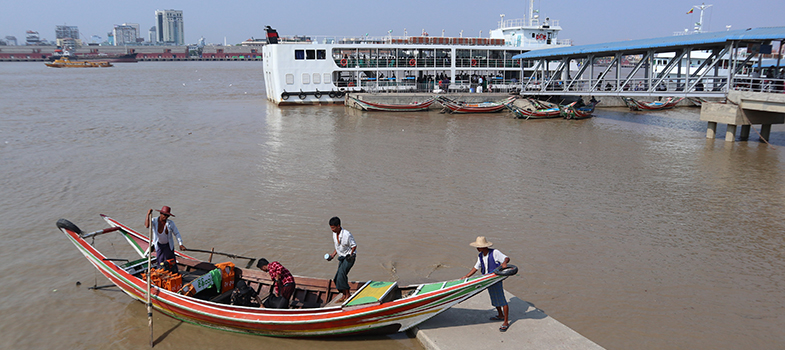3.3.4 Point and nonpoint source
When contamination originates from a single source that can be traced, it is called point source pollution. Examples include wastewater discharged legally or illegally by a factory, as well as contamination leaking from septic systems, chemical and oil spills, and illegal dumping. Point source pollution is tackled by establishing limits on what can be discharged by a facility directly into a body of water. While point source pollution originates from a specific place, it can affect miles of waterways and the ocean (NRDC, 2018).
An example of point source pollution is the Heinda mine, a tin-ore mining operation in Dawei. Since 2008, pollution from the Heinda mine and wastewater from the mine’s overflowing tailing ponds have contaminated the Myaung Pyo creek. Local communities rely on the creek for drinking water, domestic use and irrigation. The discharging of waste from the mine has allegedly caused health problems and disrupted the livelihoods of the local villagers. One of the most impacted villages is Myaung Pyo village, located just two kilometers from the mining site (EarthRights International, n.d.).
Nonpoint source
Nonpoint source pollution is contamination derived from diffuse sources, where there are many sources or the source is unknown, for example, a mix of agricultural runoff and debris blown into waterways from land. Air pollution is another example. Nonpoint source pollution is the leading cause of water pollution in Myanmar.
Transboundary
Myanmar has common borders with five neighbouring countries. Water pollution cannot be contained by a line on a map. Transboundary pollution is the result of contaminated water from one country spilling into the waters of another country. Contamination can result from a disaster, like an oil spill, or the slow, downriver creep of industrial, agricultural, and municipal discharge. Myanmar is not greatly affected by transboundary pollution as its major rivers rise and fall within its boundaries.
Question 4
Match the term to its definition.
Using the following two lists, match each numbered item with the correct letter.
Point source pollution
Nonpoint source contamination
a.Contamination originating from different and/or unknown sources
b.Contamination originating from a single source that can be traced
- 1 = b
- 2 = a
3.3.3 Ocean water
